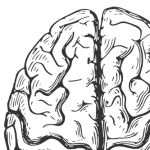A question from Quora:
My answer:
A very interesting and important question! Here’s a capsule version of my answer:
Understanding the brain is like understanding the shape of a very complex, dynamic and multifaceted object by looking at the shadows projected by it on a wall. The color of the light source and its orientation with respect to the object (and the wall) will change the nature of the shadow. Different scientific techniques are like different light sources. Different experimental protocols are like different angles. We have to look at the sequence of shadows and imagine what the object’s actual form is — it is not possible to view this object simultaneously from all angles and with all illumination sources. So there is a degree of creativity and freedom in each person’s own conception of the true nature of the object. Nevertheless, the conception that scientists eventually agree on is likely to be one that tempers this freedom with rationality and responsibility.
(Picture from Wikipedia.)
In general, cautious scientists try to avoid stating explicitly that a particular brain region or circuit is solely responsible for a particular subjective experience. Instead, we use phrases like “dopamine seems to be implicated in the processing of discovering novelty” or “emotional processes may be mediated in part by the amygdala”. Having to qualify all our statements with ‘maybe’, ‘perhaps’, and ‘seems’ is part of the reason academic papers can be a drag for both readers and writers. By the time scientific findings enter the popular press, they are simplified for mass consumption, and come to seem more certain.
When we say a region is implicated in, say, emotion, we generally use several converging lines of evidence. So brain scanning techniques like fMRI — which have several widely publicized problems — are not the only ways to infer function. The earliest studies to implicate the temporal lobe in emotion used very coarse lesions. In the 1800s the entire temporal lobe (including the amygdala) was removed in monkeys, and several mood/emotion related disorders ensued. Progressively more precise lesions were conducted, allowing scientists to discover that the amygdala was the key to what is now known as Klüver–Bucy syndrome. Symptoms include docility, hypersexuality, and hyperorality — overeating or inappropriately exploring things orally.
So long before fMRI was invented, people were starting to piece together a picture of brain functioning based on studies in monkeys and rodents.
Every technique has some confound or drawback, so specific claims about functions require integrating a variety of experimental findings. Lesions, for instance, lead to compensatory mechanisms during post-surgical recovery, so one must be careful about attributing a change in behavior to the lesion per se, rather than to the recovery process. The same goes for post-mortem studies of human brains.
A complementary technique that helps us understand the flow of signals in the brain is Neuroanatomy. By tracing how axons travel from region to region, anatomists can infer how signals from the body — sense organs, muscles, glands, viscera etc — travel to the brain and percolate through the brain. The confound here is that form does not completely constrain function — given the complexity of the brain’s connections, multiple theoretical models can be constructed using a common circuit.
Brain scanning techniques like fMRI are part of a broader field known as Electrophysiology — the study of electrical signals in the cells and tissues. Older techniques in this lineage include EEG, neuronal recordings, and PET. Neuronal firing patterns can be correlated with external stimuli or with bodily processes, so the neural dynamics that occur in parallel with a particular cognitive, emotional or unconscious/autonomic process can be inferred.
So to sum it up, sweeping statements about brain function should be taken with a pinch of salt, but the size of the pinch should be proportional to the newness of the claim. Some ideas about the hypothalamus, for example, have been corroborated by many of the techniques I have mentioned. The intro or review section of a neuroscience paper typically tries to link new findings with older ones.
None of this addresses the far more difficult philosophical questions surrounding neuroscience such as
- How do we best integrate information from various species?
- How similar are observable animal behaviors to subjective human feelings?
- How do we understand the idea of a neural correlate of some mental phenomenon?
This integration and interpretation problem is sometimes described as being underdetermined. But hopefully, the scientific community will work to ensure that their (always provisional!) descriptions of the brain/mind interface harmonize the data with logic and practical usefulness.


